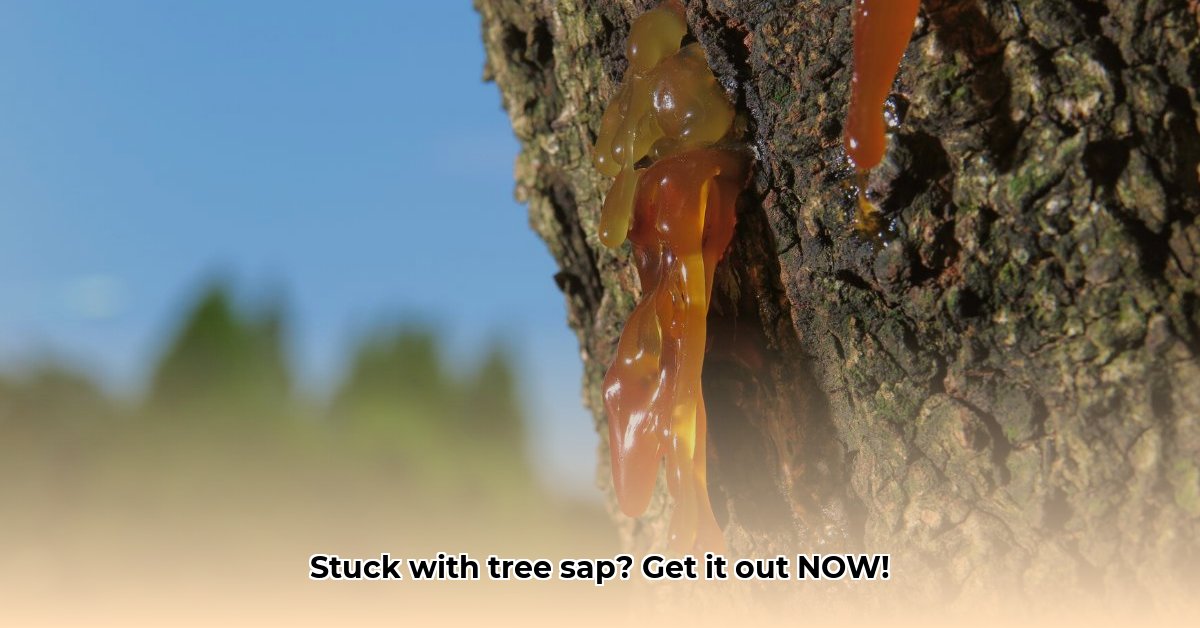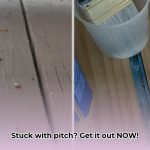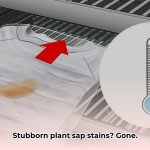Vanquishing Sticky Sap: Proven Removal Techniques
Getting tree sap on your clothes can be a sticky situation, but don’t worry! With a few simple techniques, you can likely restore your garments to their former glory. This guide provides practical, step-by-step instructions for removing tree sap from any type of clothing.
Tackling Fresh Sap: Act Fast for Best Results
Fresh sap is generally easier to remove than dried sap. The key is to act quickly!
-
The Peanut Butter Method: Sounds strange, but the oils in peanut butter can help loosen fresh sap. Apply a generous layer, let it sit for 15-20 minutes, then gently scrape it off with a butter knife or spoon. Launder as usual.
-
Freeze and Conquer: Place the stained garment in a freezer bag and freeze it for a couple of hours. Once the sap is hard, gently chip it away. Dabbing with rubbing alcohol afterwards may help dissolve any remaining residue. Finally, launder the garment.
-
Enzyme Power: Enzyme-based stain removers or heavy-duty liquid detergents are specifically designed to break down organic matter like sap. Pre-treat the stain following the product instructions, then launder. Warmer water may enhance enzyme activity, but always check the garment’s care label.
-
The Triple Threat: Combine the power of dish soap, white vinegar, and rubbing alcohol. First, pre-treat with dish soap. Then, wash the garment in a 1:1 vinegar-water solution. Rinse thoroughly. Finally, dab any remaining sap with rubbing alcohol. Launder as usual.
-
Rubbing Alcohol Quick Fix: Apply rubbing alcohol directly to the sap stain, rubbing gently. Rinse well and repeat as needed. This works best on small, fresh stains. Studies suggest higher concentrations of alcohol may be more effective, but always test on an inconspicuous area first.
-
Vinegar Soak: Soak the stained garment in a 1:1 vinegar-water solution for about 30 minutes. Gently scrub the stained area and rinse thoroughly before laundering.
Battling Dried Sap: Persistence is Key
Dried sap requires a bit more effort, but don’t give up!
-
Freeze and Scrape: Freeze the sap stain with an ice cube. Once hard, gently scrape it off with a butter knife, spoon, or your fingernail. Dabbing with white vinegar afterwards may help loosen any remaining residue. Rinse with warm water.
-
Isopropyl Alcohol (Rubbing Alcohol): A potent solvent that can dissolve dried sap. Soak a cotton ball or clean cloth with rubbing alcohol and blot the stain, working from the outside in to prevent spreading. Always test in an inconspicuous area first. Rinse with warm water and repeat if needed.
-
Vinegar Power: Create a 1:1 vinegar-water solution. Soak a clean cloth in the solution and place it over the stain for 30 minutes. Gently rub the area, rinse with water, and repeat if necessary. For stubborn stains, consider soaking the entire garment in the vinegar solution for a longer period.
-
Laundry Detergent: Apply liquid laundry detergent directly to the stain, working it into the fabric. Let it sit for 30 minutes before washing the garment as usual. This is often effective for lighter stains.
-
Enzyme-Based Stain Removers: For stubborn dried sap, try an enzyme-based stain remover. Follow the product instructions carefully.
Understanding Sap and Fabric
Identifying the Sticky Culprit
Before you begin, ensure the stain is actually tree sap. Look for a gummy or resinous feel. It may be clear, amber, or dark brown, and it often attracts dirt and debris. Pine sap is particularly thick and tenacious.
Fabric Considerations
Different fabrics react differently to cleaning methods. Natural fibers like cotton and linen are fairly resilient, while synthetics like polyester and rayon can be more sensitive to solvents. Always test any cleaning method on an inconspicuous area first, especially on delicate fabrics like silk, wool, or suede. For valuable or delicate items, professional dry cleaning is often the best option.
Tips for Success and Troubleshooting
- Test First: Always test any cleaning solution on an inconspicuous area before applying it to the visible stain.
- Patience is Key: Some stains require multiple treatments or a combination of methods. Don’t give up!
- Avoid the Dryer: Never put sap-stained clothes in the dryer until the stain is completely gone, as heat can set the stain permanently.
- Safety First: Work in a well-ventilated area when using solvents like rubbing alcohol or dry-cleaning solvent. Keep these products away from open flames.
| Method | Fabric Type | Effectiveness | Notes |
|---|---|---|---|
| Rubbing Alcohol | Most | High | Test for colorfastness |
| Enzyme Stain Remover | Most | High | Best for stubborn stains |
| Dish Soap | Delicates | Medium | Gentle option |
| White Vinegar | Delicates | Medium | Gentle, natural option |
| Peanut Butter | Most | Medium | Effective for fresh sap |
| Freezing | Most | Medium | Effective for hardened sap |
| Laundry Detergent | Most | Medium | Good for lighter stains |
Expert Insights and Ongoing Research
While these methods are generally effective, research into sap removal is ongoing. Some experts believe that oil-based solvents may be more effective for certain types of sap, like pine sap, but further research is needed. The effectiveness of any method can also depend on factors such as the age of the stain and the fabric type.
By following these guidelines and exercising a bit of patience, you can successfully remove tree sap from your clothes and get back to enjoying the great outdoors!
- Wellness Fair Ideas for Work to Boost Employee Wellbeing - December 15, 2025
- Affordable Employee Wellness Fair Ideas for Any Budget - December 14, 2025
- Employee Wellness Programs Strategically Benefit Employee Health And Retention - December 13, 2025
















